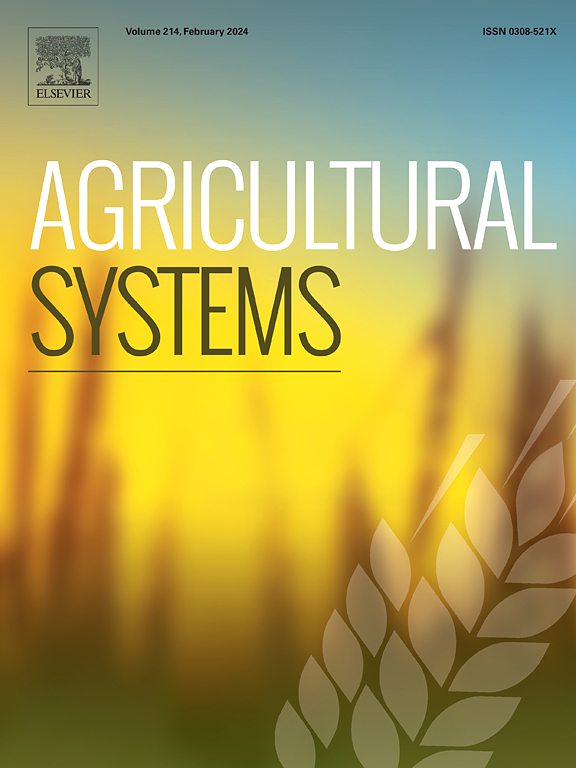How do diet shifts affect the greenhouse gas balance of agricultural soils? Denmark as a case study
IF 6.1
1区 农林科学
Q1 AGRICULTURE, MULTIDISCIPLINARY
引用次数: 0
Abstract
CONTEXT
Current food systems account for approximately 30 % of anthropogenic greenhouse gas (GHG) emissions; therefore, consumers' dietary preferences can have strong environmental consequences. This is well known for the GHG mitigation achieved by reducing animal protein consumption and associated methane emissions. However, the impact of diet shifts on the soil GHG balance has not been comprehensively evaluated yet.
OBJECTIVE
To comprehensively assess the impact of the EAT-Lancet healthy diet on the net soil GHG balance at a national level with an advanced process-based modelling framework, using Denmark as a case study.
METHODS
We adopted a two-sided approach. Firstly, we used the economic general equilibrium model MAGNET to quantify the demand-driven changes in food consumption and land use at the national level following the adoption of the EAT-Lancet healthy diet for the European Union (EU). We then used the DayCent process-based biogeochemical model to assess the implications of these changes for the GHG balance of agricultural soils at a national scale in Denmark.
RESULTS AND CONCLUSIONS
Our findings indicate that, compared to business-as-usual diets, the full adoption of the EAT-Lancet reference diet would cause significant carbon losses (up to 480 Gg CO2e y−1) and increased N2O emissions (2.1 % representing 50 Gg CO2e y−1) from 2030 to 2100 in agricultural soils. These changes primarily stem from the reduction in animal manure application to soil and a decrease in the share of permanent grasslands. The soil GHG balance differed largely across pedo-climatic conditions.
SIGNIFICANCE
Although these results do not cancel the GHG reductions achieved by reducing livestock production (1390 Gg CO2e y−1), they underscore the importance of comprehensively accounting for soil GHG emissions as they offset some of the benefits of adopting a plant-based healthy diet. Finally, the marked regional variation in net soil GHG balances highlights the need for spatially explicit assessments in other regions and at larger scales.

求助全文
约1分钟内获得全文
求助全文
来源期刊

Agricultural Systems
农林科学-农业综合
CiteScore
13.30
自引率
7.60%
发文量
174
审稿时长
30 days
期刊介绍:
Agricultural Systems is an international journal that deals with interactions - among the components of agricultural systems, among hierarchical levels of agricultural systems, between agricultural and other land use systems, and between agricultural systems and their natural, social and economic environments.
The scope includes the development and application of systems analysis methodologies in the following areas:
Systems approaches in the sustainable intensification of agriculture; pathways for sustainable intensification; crop-livestock integration; farm-level resource allocation; quantification of benefits and trade-offs at farm to landscape levels; integrative, participatory and dynamic modelling approaches for qualitative and quantitative assessments of agricultural systems and decision making;
The interactions between agricultural and non-agricultural landscapes; the multiple services of agricultural systems; food security and the environment;
Global change and adaptation science; transformational adaptations as driven by changes in climate, policy, values and attitudes influencing the design of farming systems;
Development and application of farming systems design tools and methods for impact, scenario and case study analysis; managing the complexities of dynamic agricultural systems; innovation systems and multi stakeholder arrangements that support or promote change and (or) inform policy decisions.
 求助内容:
求助内容: 应助结果提醒方式:
应助结果提醒方式:


